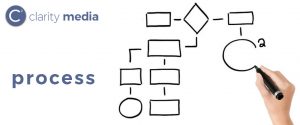- - Advertisement -

Topics
Subscribe
Transparency
- AICE Statement A Push for Greater Transparency, Ethics...May 19, 2017
- Accountability and Transparency in Media Today from...May 19, 2017
- Transparency: Action is louder than wordsMay 19, 2017
- Marc Pritchard of P&G's Media Transparency Action Plan...May 19, 2017
- How one San Francisco-based ad agency is responding...May 19, 2017
- AICE Statement A Push for Greater Transparency, Ethics...
- - Advertisement -


You are reading
ANA Gives Advertisers Guidance To Combat Lack Of Transparency In Programmatic
Contact

CONNECTICUT | SOUTH NORWALK
NEW YORK | CHELSEA
CALIFORNIA | SILVERLAKE
Call: 888.671.7778
Recent Posts





ANA Gives Advertisers Guidance To Combat Lack Of Transparency In Programmatic
ANA Gives Advertisers Guidance To Combat Lack Of Transparency In Programmatic
Yesterday With issues around transparency reaching a fever pitch in the programmatic media-buying ecosystem, the Association of National Advertisers (ANA) on Thursday issued findings from a study offered recommendations for actions that can be taken to improve the situation.
The study, “Programmatic: Seeing Through the Financial Fog,” was conducted jointly by the ANA and the Association of Canadian Advertisers (ACA), Ebiquity, and AD/FIN.
ANA CEO Bob Liodice said the study was designed to offer practical solutions to help advertisers take greater control of their programmatic investments and to investigate the costs and economics of the programmatic ecosystem.
The study cites concerns about the widespread use of non-disclosed programmatic buying arrangements between marketers and their agencies, and large knowledge gaps regarding how the programmatic ecosystem works.
The study also called out a lack of industry standards and protocols that would help advertisers analyze the costs and effectiveness of their programmatic investments against market norms and benchmarks.
The report suggested that advertisers may have trouble managing their programmatic investments with the same discipline and rigor as traditional media investments. Notably, it indicated that many advertisers that are engaged in programmatic or automated media buying:
–Don’t have the adequate transparency around their programmatic media investments to make the most informed business decisions to build business performance and brands.
–Don’t properly understand the economics of programmatic media to manage the complex supply chain that underlies each transaction.
–Lack the necessary knowledge of programmatic media costs, agency/trading desk fees, and performance details to meet internal measurement and management requirements.
–Need tools and guidance to manage and optimize their programmatic supply chain.
–Should upgrade their media agency contracts to manage and optimize their programmatic supply chain.
–Are more successful with clear programmatic key performance indicators, aligned incentives, and clear roles and responsibilities across all parties.
The findings underscore many of the observations and recommendations made by the Interactive Advertising Bureau (IAB) in conjunction with its Programmatic Symposium on Wednesday.
The ANA study took a data-centric approach, analyzing over 16 billion in-market programmatic transactions across participating advertisers. The ANA said the analysis offers a substantive examination of how advertiser budgets were actually spent along the digital supply chain, with insights about fees incurred for media, technology, service, and data.
“Programmatic media buying is becoming the most dominant approach because it offers targeting precision, scalability, cost efficiency, real-time optimization, and unprecedented leverage of big data for advertisers,” stated Liodice. “However, programmatic buying remains complex and often non-transparent. Our study revealed that this lack of transparency makes it difficult for advertisers to manage, measure, and audit programmatic media investments with the same rigor as traditional media investments.”
The study was accompanied by an “Advertiser Playbook” featuring an 11-step plan for more accountability in programmatic media. Key steps marketers should take include:
–Clarify the advertiser/agency/third-party relationships and ensure disclosures of all conflicts of interest. Given the level of debate in the marketplace around the fiduciary responsibilities of agency and buying partners, there should be complete clarity on this topic with respect to programmatic media.
–Make an informed programmatic disclosure and accountability decision. Whether to engage and purchase programmatic media on a disclosed or non-disclosed basis is a critical decision for every advertiser.
–Implement the “transparent” programmatic planning and buying model that’s right for your organization. Advertisers do have choices on how to engage in programmatic media buying to get the level of accountability and transparency they need. These choices include (a) in-house programmatic buying, (b) disclosed agreement with agency with advertiser control of the tech stack, (c) disclosed agreement with agency with agency control of the tech stack, (d) and non-disclosed.
–Enhance media buying agreement(s) to meet accountability needs and expectations. These include disclosure of data ownership and control, audit rights, data security requirements, and disclosure of third-party fees.
–Put disclosure to work and instill verification, financial reporting, and audit protocols by taking control of programmatic transaction data at the core of every impression purchased on the advertiser’s behalf.
–Remain vigilant: “trust but verify.” Given the changing landscape of digital media and the potential for new service providers, DSPs, tech providers, and data providers to be added (or dropped) from your media stack, marketers should conduct a data and disclosure review on a recurring basis.
You may also like
How one San Francisco-based ad agency is responding to an investigation that rocked the whole industry